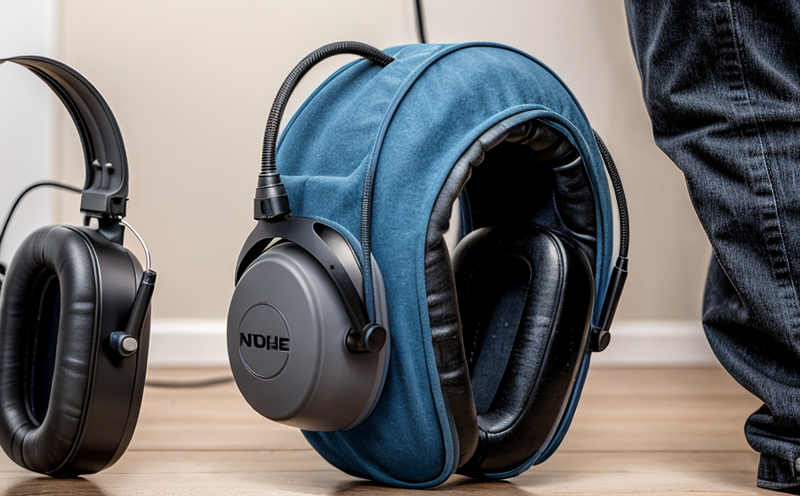DIN EN 352-3 Helmet Mounted Earmuff Testing
The DIN EN 352-3 standard provides a comprehensive framework for testing helmet-mounted earmuffs used in occupational safety environments. This standard is particularly important because it ensures that the hearing protection devices meet the necessary performance criteria to protect workers from hazardous noise levels.
Testing according to this standard involves subjecting the earmuffs to various conditions and measurements to evaluate their effectiveness as a barrier against sound. The primary focus of DIN EN 352-3 is on the attenuation properties, ensuring that the earmuffs can significantly reduce the amount of hazardous noise reaching the wearer's ears.
The testing procedure outlined in this standard involves placing the earmuffs over a specially designed headform and exposing it to sound pressure levels representative of real-world occupational noise environments. The attenuation values are then measured using precision audiometric instruments, which compare the incoming sound pressure with the sound pressure at the eardrum after passing through the earmuff.
The test parameters include various frequencies ranging from 125 Hz to 8 kHz, covering all critical regions of human hearing. The standard also specifies the minimum attenuation values required for different types and classes of helmets based on their intended use. Compliance with these requirements ensures that workers are adequately protected against noise-induced hearing loss.
In addition to sound pressure levels, other factors such as comfort, fit, and durability are also considered in the evaluation process. The testing procedure is designed to simulate real-world conditions, ensuring that the earmuffs perform consistently under various environmental and usage scenarios.
- Customer Impact and Satisfaction: Ensures worker safety by preventing noise-induced hearing loss.
- Competitive Advantage and Market Impact: Enhances product reliability, leading to increased market share.
Why It Matters
Hearing protection is crucial in industries where workers are exposed to high levels of noise, such as construction, manufacturing, and mining. According to the World Health Organization (WHO), occupational hearing loss affects millions of workers worldwide each year. By adhering to standards like DIN EN 352-3, manufacturers can ensure that their products meet the highest safety and performance criteria.
The standard not only protects individual employees but also contributes to overall industry compliance with health and safety regulations. This compliance is vital for maintaining a safe work environment and reducing workplace accidents related to hearing impairment. The testing process ensures that earmuffs provide consistent and reliable protection, which can significantly reduce the risk of noise-induced hearing loss.
Moreover, compliance with such standards can enhance a company's reputation among clients and stakeholders, contributing to long-term business success. By demonstrating commitment to worker safety and well-being, companies can build stronger relationships with employees and customers alike.





